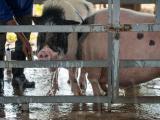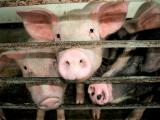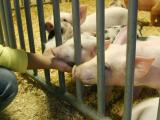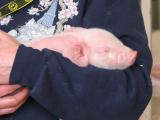Sep 8, 2011
Severe H1N1 flu in pregnant women led to preterm, smaller babies
Babies born to women who were hospitalized with pandemic H1N1 influenza during pregnancy were more likely to be premature and/or have low birth weight, according to a report released by the Centers for Disease Control and Prevention (CDC) today. CDC authors examined data on severe H1N1 cases in pregnant and postpartum women that occurred from Apr 15, 2009, to Aug 10, 2010, as reported by state health departments. Their analysis is described today's Morbidity and Mortality Weekly Report (MMWR). The CDC received reports of 347 pregnant women who had severe H1N1 illness, including 75 who died and 272 who were admitted to intensive care units and survived. As was shown in earlier studies, women who received early antiviral treatment were more likely to survive. Of women who were hospitalized for flu, 63.6% delivered prematurely or very prematurely, and 43.8% had low-birth-weight babies, compared with US averages of 12.3% and 8.2% for those variables. Also, 25% of babies born after their mothers had been discharged from a hospital following flu treatment were small for gestational age, versus a US average of 10%. The CDC said the findings show the importance of flu vaccination for pregnant women and of prompt antiviral treatment when flu is suspected or confirmed.
Sep 9 MMWR report
UK surveillance network missed many H1N1 hospitalizations
The second wave of the 2009 H1N1 flu pandemic in Britain was slightly more severe than the first wave, but neither had a high rate of severe outcomes, according to a study in BMJ today that also found that UK surveillance detected only 20% to 30% of hospitalizations. Using data from all available UK surveillance systems, researchers used a model that accounted for limitations of each surveillance tool to estimate 2009 H1N1 outcomes. They found that the summer wave saw a 0.54% hospitalization rate, a 0.05% intensive care unit (ICU) admission rate, and a 0.015% incidence of death. These correspond to 3,200 hospital admissions, 310 ICU admissions, and 90 deaths. In the second wave the rates and numbers were 0.55% (7,500), 0.10% (1,340), and 0.025% (240), respectively. The researchers also estimated that 30% (20% to 43%) of hospitalizations were detected by surveillance in the summer, compared with 20% (15% to 25%) in the second wave. They conclude, "Results suggest low ascertainment rates, highlighting the importance of systems enabling early robust estimation of severity, to inform optimal public health responses."
Sep 8 BMJ study
2009 H1N1 virus tougher on pigs than classical swine flu virus
US researchers report that 2009 H1N1 influenza viruses cause more severe effects in pigs than classical swine flu viruses do and that the 2009 virus can infect pigs without first undergoing any adaptations, according to a report in the Journal of Virology. The researchers inoculated pigs with two different 2009 H1N1 viruses—one from humans and one from pigs—and with a "1918-like" classical swine flu virus first identified in 1930. Both 2009 viruses caused a variety of clinical symptoms, such as coughing and sneezing, while the 1930 virus caused only fever. The researchers found that both 2009 viruses were more virulent than the 1930 variant, "due in part to differences in host transcriptional response during acute infection." They also found that the 2009 virus "does not need prior adaptation to infect pigs, has a high potential to be maintained in naïve swine populations, and might reassort with currently circulating swine influenza viruses." Their report comes in the wake of reports in the past week of four US children who were infected with swine-origin H3N2 viruses that included a gene from the 2009 H1N1 virus.
Sep 7 J Virol abstract

















